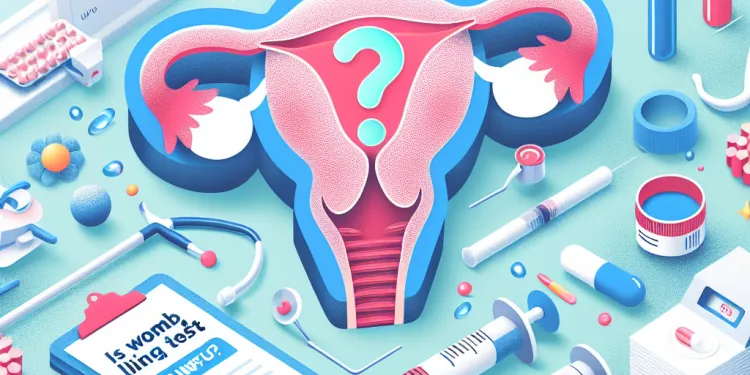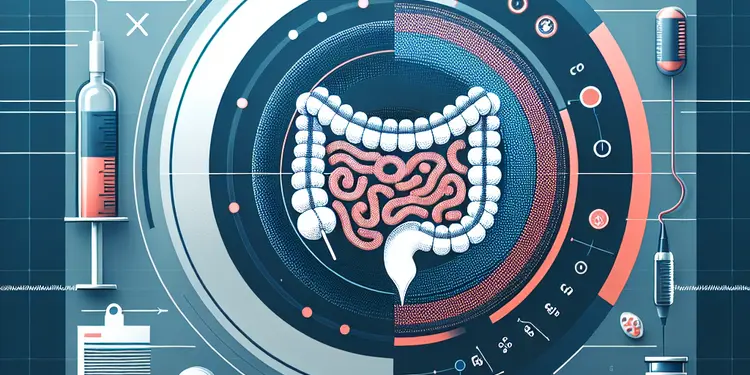
Find Help
More Items From Ergsy search
-

Are there risks associated with a womb lining test?
Relevance: 100%
-

Are there any risks associated with the womb lining test?
Relevance: 98%
-

What is the womb lining test?
Relevance: 93%
-

What is the Womb Lining test?
Relevance: 92%
-

Is a womb lining test painful?
Relevance: 91%
-

Is the womb lining test covered by the NHS?
Relevance: 91%
-

Why is a womb lining test performed?
Relevance: 91%
-

How is a womb lining test conducted?
Relevance: 88%
-

Is the womb lining test covered by the NHS?
Relevance: 88%
-

Is the womb lining test painful?
Relevance: 88%
-

Can a womb lining test detect cancer?
Relevance: 87%
-

Can a womb lining test detect cancer?
Relevance: 86%
-

How is the womb lining test performed?
Relevance: 85%
-

Why might someone need a womb lining test?
Relevance: 85%
-

What happens after a womb lining test?
Relevance: 81%
-

How should I prepare for a womb lining test?
Relevance: 80%
-

Can I drive after the womb lining test?
Relevance: 79%
-

Is there any follow-up required after a womb lining test?
Relevance: 78%
-

Does the womb lining test require any special preparation?
Relevance: 75%
-

How long does it take to get results from a womb lining test?
Relevance: 75%
-

How long does it take to get results from a womb lining test?
Relevance: 74%
-

What does an evaporation line mean on a pregnancy test?
Relevance: 46%
-

Are there risks associated with home colorectal cancer tests?
Relevance: 34%
-

What is a lot line adjustment?
Relevance: 32%
-

Are digital pregnancy tests more accurate than non-digital tests?
Relevance: 31%
-

How does a pregnancy test work?
Relevance: 30%
-

What is a pregnancy test?
Relevance: 29%
-

What should I do if I get unclear results on a pregnancy test?
Relevance: 28%
-

When should I take a pregnancy test?
Relevance: 27%
-

Can a pregnancy test expire?
Relevance: 26%
-

How long should I wait to read the results of a pregnancy test?
Relevance: 26%
-

What can cause a false positive pregnancy test?
Relevance: 25%
-

Rectal swab test for Gonorrhoea and Chlamydia
Relevance: 25%
-

Is HPV testing available?
Relevance: 25%
-

What is a stool DNA test?
Relevance: 25%
-

What are the different types of pregnancy tests?
Relevance: 24%
-

What if my pregnancy test is positive?
Relevance: 24%
-

Is genetic testing available for colorectal cancer?
Relevance: 24%
-

Is a colonoscopy necessary after a positive home test?
Relevance: 23%
-

How can I test myself for colorectal cancer?
Relevance: 23%
Are There Risks Associated with a Womb Lining Test?
Understanding the Womb Lining Test
The womb lining test, medically known as an endometrial biopsy, is a procedure used to obtain a small sample of tissue from the lining of the womb, or endometrium, for further examination. It is often conducted to investigate issues such as abnormal uterine bleeding, infertility, or to check for uterine infections or cancerous conditions. While this test can provide crucial insights into various uterine conditions, it's important to be aware of the potential risks involved.Possible Risks and Side Effects
Like any medical procedure, an endometrial biopsy carries certain risks and potential side effects. Common minor side effects include cramping and discomfort during or after the procedure, spotting or light bleeding, and a feeling of pressure. These symptoms are generally short-lived and can often be managed with over-the-counter pain medication such as paracetamol. In rare cases, more significant complications may arise. These include excessive bleeding, infection, or damage to the uterine wall. Signs of severe complications, such as heavy bleeding, fever, or foul-smelling discharge, should prompt immediate medical attention. However, due to the minimally invasive nature of this procedure, such complications are uncommon.Reducing Risks and Ensuring Safety
To minimize risks, it is crucial for patients to share a complete medical history with their healthcare provider and discuss any concerns prior to the procedure. This includes informing the healthcare provider of any medications they are taking and any bleeding disorders or allergies they have. Healthcare professionals conducting the test usually follow strict protocols to maintain safety and reduce the risk of infection or complications. Patients are advised to rest and avoid intense physical activity or using tampons for a short period following the procedure to facilitate recovery.Conclusion
While the endometrial biopsy is a generally safe procedure, being informed about the potential risks and side effects enables patients to communicate effectively with their healthcare providers. In the UK, healthcare practitioners aim to ensure the procedure is conducted safely and with minimal discomfort, while providing valuable diagnostic insights to guide further medical decisions.Are There Risks with a Womb Lining Test?
What is the Womb Lining Test?
The womb lining test is when a doctor takes a tiny piece of the inside of the womb to look at it. This helps the doctor understand problems like unusual bleeding, trouble having babies, or if there might be an infection or cancer. The test can be very helpful, but it's important to know there can be risks.What Side Effects Can Happen?
Just like other medical tests, the womb lining test can have some side effects. These might be cramping and feeling uncomfortable during or after the test. There might also be a little bleeding and a feeling of pressure. Most of the time, these go away quickly and you can take medicine like paracetamol to feel better. Sometimes, but not often, there can be bigger problems. These could be a lot of bleeding, an infection, or harm to the womb. If there is heavy bleeding, a fever, or a bad-smelling discharge, it's important to see a doctor right away. But because the test is not very invasive, these big problems don't happen often.How to Stay Safe
To be safe, tell your doctor all about your health and any worries you have before the test. This includes telling them about any medicines you take, if you have any bleeding problems, or if you are allergic to anything. Doctors take care to do the test safely and prevent infections. After the test, it's good to rest and not do heavy activities or use tampons for a little while to help you recover.Conclusion
The womb lining test is usually safe. Knowing about the possible risks helps you talk to your doctor. In the UK, doctors work to make sure the test is safe and doesn't hurt much, while giving important information to help make health decisions.Frequently Asked Questions
What is a womb lining test?
A womb lining test, also known as an endometrial biopsy, is a procedure to take a small sample of the lining of the womb (endometrium) for examination.
Why is a womb lining test performed?
The test is often done to investigate abnormal uterine bleeding, check for endometrial hyperplasia or cancer, and assess the uterine lining in fertility evaluations.
What are the common risks associated with a womb lining test?
Common risks include mild cramping, spotting, and discomfort during the procedure. These side effects are usually temporary.
Are there serious risks involved with a womb lining test?
Serious complications are rare but can include infection, heavy bleeding, or perforation of the uterus.
How can I minimise the risks of a womb lining test?
Following your healthcare provider’s instructions before and after the procedure, such as avoiding tampon use and sexual intercourse, can help reduce risks.
Will I experience pain during a womb lining test?
You may experience some discomfort or cramping, similar to menstrual cramps, but this is usually brief. Over-the-counter pain relief can help manage symptoms.
How long does recovery take after a womb lining test?
Most people recover within a day or two, with symptoms like mild cramping and spotting subsiding fairly quickly.
Should I be concerned about infection after a womb lining test?
While infection is a rare complication, it’s important to monitor for symptoms such as fever, heavy bleeding, or unusual discharge and contact your doctor if they occur.
Can a womb lining test affect my fertility?
The procedure is generally safe and should not affect fertility. However, if you have concerns, discuss them with your healthcare provider.
Is there any preparation required before a womb lining test?
Your doctor may advise you on specific preparations, such as avoiding certain medications or scheduling the test on certain days of your menstrual cycle.
What should I expect during a womb lining test procedure?
The procedure involves inserting a small instrument into the uterus through the cervix to obtain a tissue sample. It usually takes around 15 minutes.
Can I drive after having a womb lining test?
It is generally safe to drive after the procedure, but if you feel lightheaded or in pain, it may be best to arrange for someone to drive you home.
Will I receive anaesthesia during a womb lining test?
Local anaesthesia may be used to numb the cervix, but in many cases, the procedure is done without it, relying instead on pain relief if needed.
How soon will I receive results from a womb lining test?
Results are typically available within a week. Your healthcare provider will discuss them with you and advise on any further steps if required.
What actions should I take if I experience severe symptoms after the test?
If you experience severe pain, heavy bleeding, or signs of infection, contact your healthcare provider immediately as these could indicate complications.
What is a womb lining test?
This is a test to look at the inside of a woman's womb. The womb is where a baby grows inside a mum.
The test helps doctors check if the womb is healthy.
Doctors might do this test if a woman is having problems like pain or bleeding.
To make reading easier, use a ruler or finger to follow the words. You can also ask someone to read with you.
A womb lining test is a way to check the inside of the womb. It is also called an endometrial biopsy. The doctor takes a tiny piece from the womb lining to look at it closely.
Why do doctors check the womb lining?
Doctors look at the womb lining to check if it is healthy. They want to make sure everything is okay. This can help find problems early so they can be fixed.
If the lining is not healthy, it can cause issues like trouble having a baby or feeling pain.
Doctors may use a special tool, like an ultrasound, to look inside. They might also take a tiny piece of the lining to study.
Using pictures and simple explanations can help you understand more. You can also ask someone to explain it to you.
The test helps doctors find out why someone might be bleeding when they shouldn't be. It checks for extra thick parts or cancer in the uterus. It also looks at the inside of the uterus to see how healthy it is, especially if someone is having trouble getting pregnant.
What are the common risks of a womb lining test?
Doctors sometimes test the womb lining, which is part inside a woman's body. This test can help find out what is making a person sick. But there are some things that could go wrong. These are called risks.
Here are some risks of this test:
- It might hurt a little.
- You might have a bit of bleeding.
- You could feel dizzy or sick.
If you are worried, you can talk to your doctor. They will answer your questions and help you feel better.
Here are some things that might happen:
- You might feel a little bit of pain, like a cramp.
- You might see some light bleeding.
- You might feel a bit uncomfortable when it happens.
These things usually go away quickly.
If you want help understanding this, you can ask someone you trust to explain. Or you can use tools like text-to-speech to listen to the words.
Are there big dangers with a womb lining test?
A womb lining test checks the inside of a woman's tummy where babies grow. This is called the womb.
Doctors do the test to find out why a woman might have trouble having a baby or why she might bleed a lot.
Like many tests, it can have some dangers. But they don’t happen often.
Here are some things to know:
- Feeling Unwell: You might feel tummy pain after the test. Medicine can help with this.
- Bleeding: Some bleeding afterward is normal. But if it’s a lot, tell an adult to help you talk to a doctor.
- Infection: There’s a small chance of infection. Look out for fever or bad-smelling discharge and talk to a doctor if this happens.
It’s good to talk to a doctor or nurse about any worries. They can help and give you tools like pictures or videos to understand better.
Serious problems do not happen often. But sometimes they can include getting an infection, bleeding a lot, or a hole in the uterus.
How can I make a womb lining test safer?
A womb lining test can help doctors learn more about your health. But there are some risks. Here are ways to make the test safer:
- Talk to your doctor about what will happen during the test.
- Ask the doctor any questions you have. Don't be afraid to ask.
- Tell the doctor about any allergies you have.
- Bring someone you trust with you for support.
- Listen to your body. Tell the doctor if you feel unwell.
It can help to use tools or techniques for support:
- Use simple diagrams or pictures to understand the test.
- Write down notes or record the conversation to remember information.
- Use calm breathing to stay relaxed.
Listen to what your doctor says before and after the test. This can help you stay safe. You might need to avoid using tampons or having sex.
Will it hurt when doctors test the womb lining?
Doctors might need to test the lining inside the womb. This helps them check if it is healthy. Some people worry it might hurt.
If you are scared it might be painful, tell your doctor or nurse. They can help make you feel better and might give you advice on how to relax.
Sometimes people feel a little bit of pain or cramping, like a period. This is normal, but tell the doctor or nurse how you feel.
Here are some tips that might help:
- Breathe slowly and stay calm.
- Bring someone with you for support.
- Listen to music to distract yourself.
If you have more questions, talk to your doctor or nurse. They want to help you feel comfortable.
You might feel some pain or cramps, like period pain. But it usually does not last long. Taking medicine from the shop can help you feel better.
How long to feel better after a womb lining test?
After having a womb lining test, your body needs some time to feel better. This is called recovery time. It might take a day or two for you to feel normal again. Some people may feel better quicker, and others might take a little longer.
If you feel sore or tired, it is okay. Resting and taking it easy can help. Ask someone to help you with things you might find hard to do. It's also good to talk to your doctor if you feel worried or if you have questions.
Using a calendar or a chart can help you remember how you feel each day. This can be useful to share with your doctor.
Be gentle with yourself and give your body some time to heal.
Most people feel better in a day or two. They might have small pains or see a little blood, but this usually goes away fast.
Do I need to worry about getting an infection after a womb lining test?
Getting an infection is not common, but it's good to watch for signs. If you get a fever, a lot of bleeding, or anything strange coming out of your body, talk to your doctor.
Can a Test on the Womb Lining Affect Having a Baby?
This procedure is usually safe and shouldn't stop you from having children in the future. But if you are worried, talk to your doctor or nurse.
Do I need to get ready for a womb lining test?
Yes, you might need to do a few things to get ready. It's a good idea to talk to your doctor. They can tell you what to do. You might need to stop eating or drinking before the test. Your doctor will let you know if that's needed.
If you're worried, you can ask someone you trust to go with you. You might also want to write down any questions you have. This can help you remember to ask them.
Using a calendar or an app on your phone can help you remember the date and time of the test. Set reminders if you need to!
Your doctor might tell you to get ready in a certain way. You might have to stop taking some medicines. You might also need to plan the test for a certain time during your period.
What happens in a womb lining test?
A womb lining test checks the inside of your womb. Here is what will happen:
- You will go to the doctor.
- The doctor will use special tools to look inside your womb.
- The test might feel a bit strange or uncomfortable.
- The test does not take long.
Ask your doctor if you have questions. You can also bring a friend or family member for support.
The doctor uses a tiny tool and carefully puts it inside the womb through the cervix. They do this to take a small piece from inside. It usually takes about 15 minutes.
Can I drive after a womb lining test?
If you had a womb lining test, you might wonder if you can drive. A womb lining test looks inside your womb. It might be called an "endometrial biopsy."
You could feel a bit tired or dizzy after the test. It's a good idea to ask someone to drive you home just in case. This is safer and helps you feel better.
If you are unsure, you can talk to your doctor or nurse. They will give you advice on what to do after your test.
Some helpful things you can do:
- Bring a friend or family member with you to the appointment.
- Plan to rest after the test.
- Ask for a doctor's note if you need time off work or school.
It is usually okay to drive after the treatment. But if you feel dizzy or hurt, it's a good idea to ask someone to drive you home.
Will I get medicine to sleep during a womb lining test?
The doctor might give you medicine so you don't feel pain during the test. This is called anaesthesia. It helps you relax and feel comfortable.
Here are some ways to help you understand:
- Ask your doctor to explain what will happen.
- You can bring a friend or family member to help you feel calm.
Doctors can use a special medicine to make the cervix numb. This stops you from feeling pain. But sometimes, doctors do this without the medicine. Instead, they give you something else for pain if you need it.
When will I get my womb lining test results?
After you have your womb lining test, you might wonder when you will find out the results.
You will usually get your results in a few days or weeks. Ask your doctor or nurse when you will know.
If you want, you can use a calendar or set a reminder on your phone to help you remember the date.
You usually get the results in a week. Your doctor will talk about them with you and tell you what to do next if needed.
What should I do if I feel very bad after the test?
If you feel very bad after the test, tell someone. It is important to get help. You can:
- Tell a doctor or nurse.
- Call someone you trust for help.
- Rest and stay calm.
Using pictures or simple tools like a feelings chart might help you say how you feel.
If you have bad pain, lots of bleeding, or think you have an infection, call your doctor or nurse right away. These are signs that something might be wrong.
Useful Links
- Ergsy carfully checks the information in the videos we provide here.
- Videos shown by Youtube after a video has completed, have NOT been reviewed by ERGSY.
- To view, click the arrow in centre of video.
- Most of the videos you find here will have subtitles and/or closed captions available.
- You may need to turn these on, and choose your preferred language.
- Go to the video you'd like to watch.
- If closed captions (CC) are available, settings will be visible on the bottom right of the video player.
- To turn on Captions, click settings .
- To turn off Captions, click settings again.
More Items From Ergsy search
-

Are there risks associated with a womb lining test?
Relevance: 100%
-

Are there any risks associated with the womb lining test?
Relevance: 98%
-

What is the womb lining test?
Relevance: 93%
-

What is the Womb Lining test?
Relevance: 92%
-

Is a womb lining test painful?
Relevance: 91%
-

Is the womb lining test covered by the NHS?
Relevance: 91%
-

Why is a womb lining test performed?
Relevance: 91%
-

How is a womb lining test conducted?
Relevance: 88%
-

Is the womb lining test covered by the NHS?
Relevance: 88%
-

Is the womb lining test painful?
Relevance: 88%
-

Can a womb lining test detect cancer?
Relevance: 87%
-

Can a womb lining test detect cancer?
Relevance: 86%
-

How is the womb lining test performed?
Relevance: 85%
-

Why might someone need a womb lining test?
Relevance: 85%
-

What happens after a womb lining test?
Relevance: 81%
-

How should I prepare for a womb lining test?
Relevance: 80%
-

Can I drive after the womb lining test?
Relevance: 79%
-

Is there any follow-up required after a womb lining test?
Relevance: 78%
-

Does the womb lining test require any special preparation?
Relevance: 75%
-

How long does it take to get results from a womb lining test?
Relevance: 75%
-

How long does it take to get results from a womb lining test?
Relevance: 74%
-

What does an evaporation line mean on a pregnancy test?
Relevance: 46%
-

Are there risks associated with home colorectal cancer tests?
Relevance: 34%
-

What is a lot line adjustment?
Relevance: 32%
-

Are digital pregnancy tests more accurate than non-digital tests?
Relevance: 31%
-

How does a pregnancy test work?
Relevance: 30%
-

What is a pregnancy test?
Relevance: 29%
-

What should I do if I get unclear results on a pregnancy test?
Relevance: 28%
-

When should I take a pregnancy test?
Relevance: 27%
-

Can a pregnancy test expire?
Relevance: 26%
-

How long should I wait to read the results of a pregnancy test?
Relevance: 26%
-

What can cause a false positive pregnancy test?
Relevance: 25%
-

Rectal swab test for Gonorrhoea and Chlamydia
Relevance: 25%
-

Is HPV testing available?
Relevance: 25%
-

What is a stool DNA test?
Relevance: 25%
-

What are the different types of pregnancy tests?
Relevance: 24%
-

What if my pregnancy test is positive?
Relevance: 24%
-

Is genetic testing available for colorectal cancer?
Relevance: 24%
-

Is a colonoscopy necessary after a positive home test?
Relevance: 23%
-

How can I test myself for colorectal cancer?
Relevance: 23%


